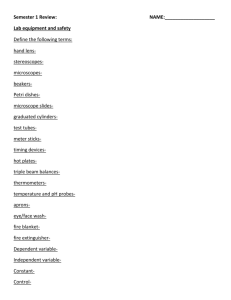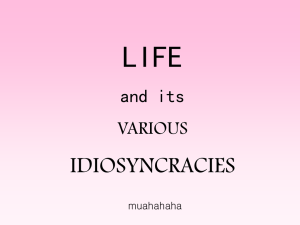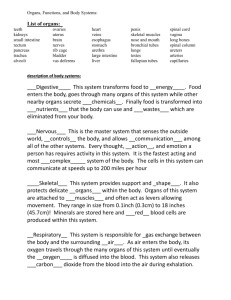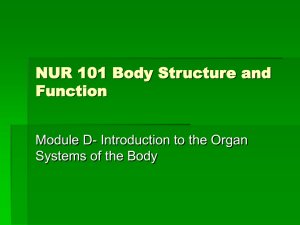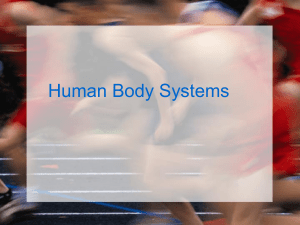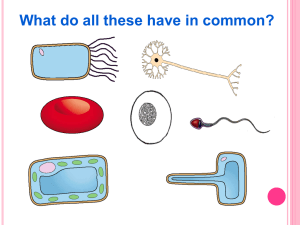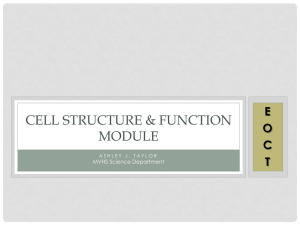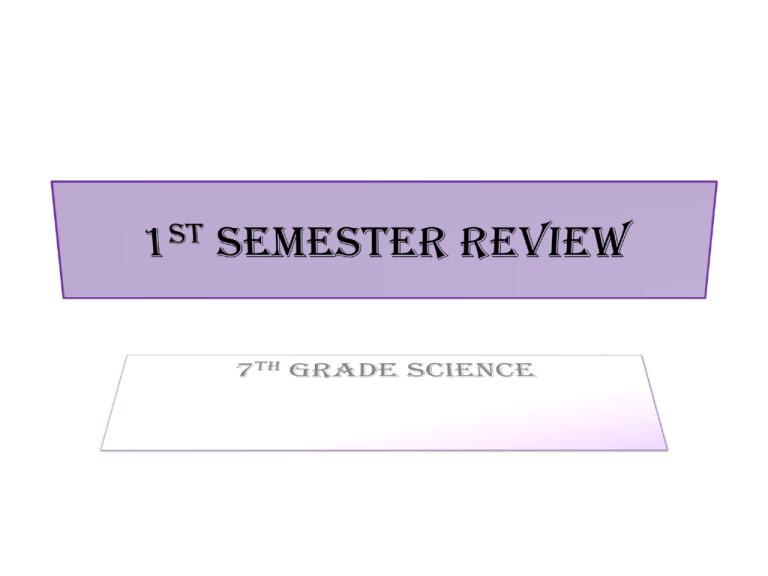
1. Explain the importance
of lab safety when
conducting experiments
in the class room.
2. List at the minimum 3
types of lab safety
equipment and describe
their function.
3. The scientific process is a series of steps designed to
aid a scientist through the experimentation process.
Choose the answer with the correct order.
a)
b)
c)
d)
Formulate a conclusion, research the problem test the hypothesis
Design the experiment, identify the problem, analyze the results
Develop a hypothesis research the problem, formulate conclusions
Identify a problem, test the hypothesis, formulate conclusions
4. This variable depends upon what is done to it by the
independent variable.
A)manipulated
B)Extraneous
C)Dependent
D)all of these
5. These variables are those that are created by the
researcher. These are typically found in experimental
studies.
A)Extraneous
B)Manipulated
C)Dependent
D)none of these
Fill in the blank:
6. All living things_______ to continue life.
7. All living things contain ____ located in the
nucleus of a cell.
8. All living things _____ to their environment.
9. All living things regulate temperature to
maintain ________.
10. Use your note
book and list the 3
concepts of cell
Theory.
Prokaryotes:
•First cells to evolve
•Contain NO nucleus
•DNA is found within the
cytoplasm
Eukaryotes:
•Evolved from prokaryotes
•HAVE a nucleus
•DNA is found within the
nucleus
11. List One Example
of each type of cell.
Organism
12.Use the Diagram to
the Right and fill in
the missing levels of
organization.
13. Give an example
of each level of
organization.
Organs
Cells
15. Draw and
label diagram.
15. Draw and
label diagram.
16. Write the function of the following organelles:
ORGANELLE
Cell Membrane
chloroplast
Vacuole
nucleus
mitochondria
Cell wall
lysosome
Golgi Apparatus
ribosome
cytoplasm
Endoplasmic Reticulum
FUNCTION
ANIMAL CELL, PLANT
CELL , or BOTH
17. What is an organelle? What do organelles
do?
18. Which organelles are only found in plant
cells?
19. Make an analogy between the following
organs and cell organelles.
a) The Bladder is like the ______in a plant cell
because __________.
b) The brain is like the _______ in a cell
because_______.
c) The skin is like the ________of a cell
because _________.
20. List the organs and function of the body systems listed below:
SYSTEM
CIRCULATORY
RESPIRATORY
DIGESTIVE
ENDOCRINE
INTEGUMENTARY/SKIN
REPRODUCTIVE
EXCRETORY
ORGANS/STRUCTURES
FUNCTION/JOB
21. Use the diagram to the
right to describe the
function of the following
organs of the excretory
(urinary) system.
a) Kidneys:__________
b) Ureters:__________
c) Bladder:__________
d) Urethra:__________
22. What is the main function
of the digestive system?
23. What is the difference
between mechanical and
chemical digestion; include
the location in the digestive
system for each.
24. Where does digestion
begin?
25. Which organ pictured is
responsible for absorbing
most of the nutrients found
within your food?
26. Which organ pictured is
responsible for absorbing
excess water?
27. What is the function of
the skeletal system?
28. Where are red blood
cells made?
29. What is the purpose of
cartilage?
30. What is the largest
bone in the human body?
31. Identify the 4
types of joints seen to
your right.
a)
b)
c)
d)
32. Identify the 3
types of muscle to
your right and state
whether or not the
control is voluntary or
involuntary.
a)
b)
c)
33. What is the
primary function of
the Circulatory
system?
34. Where does gas
exchange occur?
35. How do these two
systems work
together?
36.The parts of the human
blood are shown in the
vile diagram to your
right. Write the
function of each
component.
a) Plasma:_____________
______
b) White blood
cells:___________
c) Platelets:___________
_______
d) Red blood
cells:_____________
37. What is the function of
the nervous system?
38. What is the function of
the endocrine system?
39. How do these two
systems work together to
sustain life and regulate
homeostasis?
40. What are hormones
and how do they help the
body maintain
homeostasis?
41. Use the word
bank below to label
the female
reproductive System.
WORD BANK
cervix
vagina
uterus
fallopian tube
Ovary
ovum
42. Use the word bank
below to label the male
reproductive diagram.
Word Bank
Scrotum
epididymus
Urethra
Prostate
vas deferens
Penis
testicle
bladder*
rectum*
43. What is the function or purpose of the
reproductive system?
44. What is produced by the testes?
45. Do male or females have testes?
46. What is produced by the ovaries?
47. Do male or females have ovaries?
48. What are gametes?
49. When does fertilization occur?
50. How does the reproductive and endocrine
system work together?
51. Name 3 functions
that the
integumentary system
provides.
52. Explain how the
excretory,
integumentary,
respiratory , and the
digestive system are
similar?
53. What is the
function of the
respiratory system
and what are some of
the limitations of this
model?
54.
55. Explain what the “fight
or flight” response
means?
Picture 2
Picture 1
56. Label the 3 pictures to
your right phototropism,
geotropism, or
hydrotropism.
57. Use picture 4 and
explain the concept of
turgor pressure.
Picture 4
Picture 3
58. Explain how the
organelles of a cell
compare to the body to
remove waste and extract
energy?
59. Define photosynthesis.
60. Use the diagram to
explain the waste removal
equates energy for other
organisms.
61. What is needed for
photosynthesis to occur?
What is the product of
Photosynthesis?
62. In what order do energy transformations occur during
digestion?
a) Radiant to thermal to chemical
b) Chemical to mechanical to thermal
c) Thermal to chemical to mechanical
d) Chemical to chemical to chemical
63. Where does radiant energy come from?
64. Radiant energy turns into what other type of energy?
65. What is the process the equation above is
describing?
66. What is needed for this process to occur?
67. Which compound is an organic compound? Write yes if it
is No if it is not
a) C6H12O6
b) H20
c) KNO3
d) CuCl2
68. Which statement is true about organic compounds?
a) Organic compounds are only present in plants
b) Organic compounds cant be recycled into the environment
c) Organic compounds must contain carbon
d) Organic compounds are only found in expensive food
Change
Cracking eggs
69. What is the
difference between a
physical and chemical
change?
Baking a cake
Ice melting
Burning toast
Slicing bread
70. Use the chart and
place a P to indicate a
Physical change and C
for chemical change.
Rusting nails
Frying eggs
Burning toast
Mowing lawns
Apple turning brown
P to indicate physical C
to indicate chemical
71. The digestive system breaks down substances into
smaller molecules to used as energy. Fill in the blanks below:
• Carbohydrates are broken down into__________
• Fats or lipids are broken down into_________
• Proteins are broken down into__________
72. Identify the following foods as carbohydrate ( C ) or
Protein (P)
Eggs___ Bread____ Chicken ____ Potato____ Cabbage ____ Milk______
73. Use the
diagram to the
right and explain
the function of
each component .
74. What is a
punnett square?
75. What Is a
dominant gene?
76. What is meant
by the term
phenotype?
77.In a certain species of plant, the color
purple (P) is dominant to the color white
(p). According to the Punnett Square, what
is the probability of an offspring being
white?
a) 25%
b) 0%
c) 75%
d) 100%
TRAIT
78.What is heredity?
What is the difference
between an acquired
and an inherited
trait?
79. Using the chart
below determine
whether each trait is
either inherited or
acquired.
Hair Color
Cooking Skills
Riding a bike
Freckles
Dimples
baldness
Place an I for
inherited or A for
Acquired
80. What is an
adaptation?
81. What is a structural
adaptation?
82. What is a behavioral
adaptation?
83. What is a physiological
adaptation?
84. Match each picture
with its adaptation:
Structural, Behavioral, or
Physiological
Picture 2
Picture 1
Picture 4
Picture 3
Picture 5
Picture 6
**** Use the
diagram of the
cell city to
identify as
many cell
organelle
analogies as
possible.


